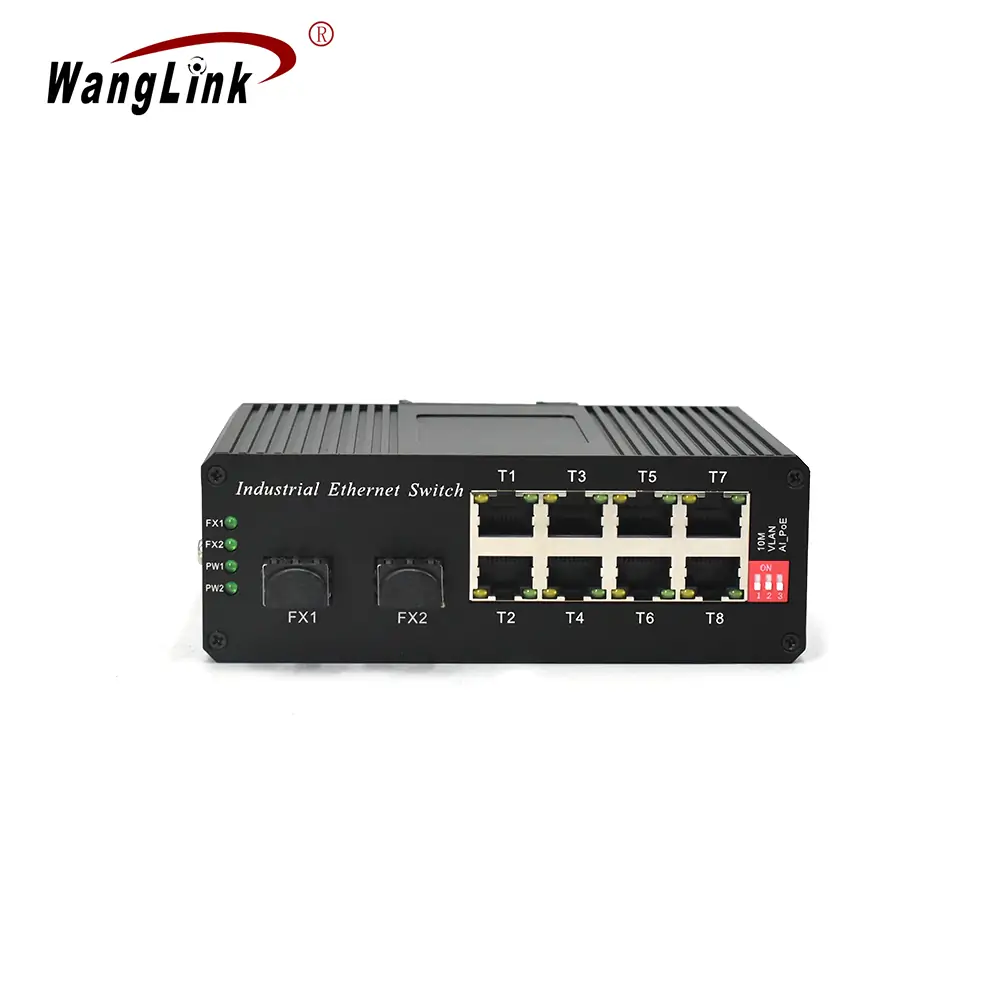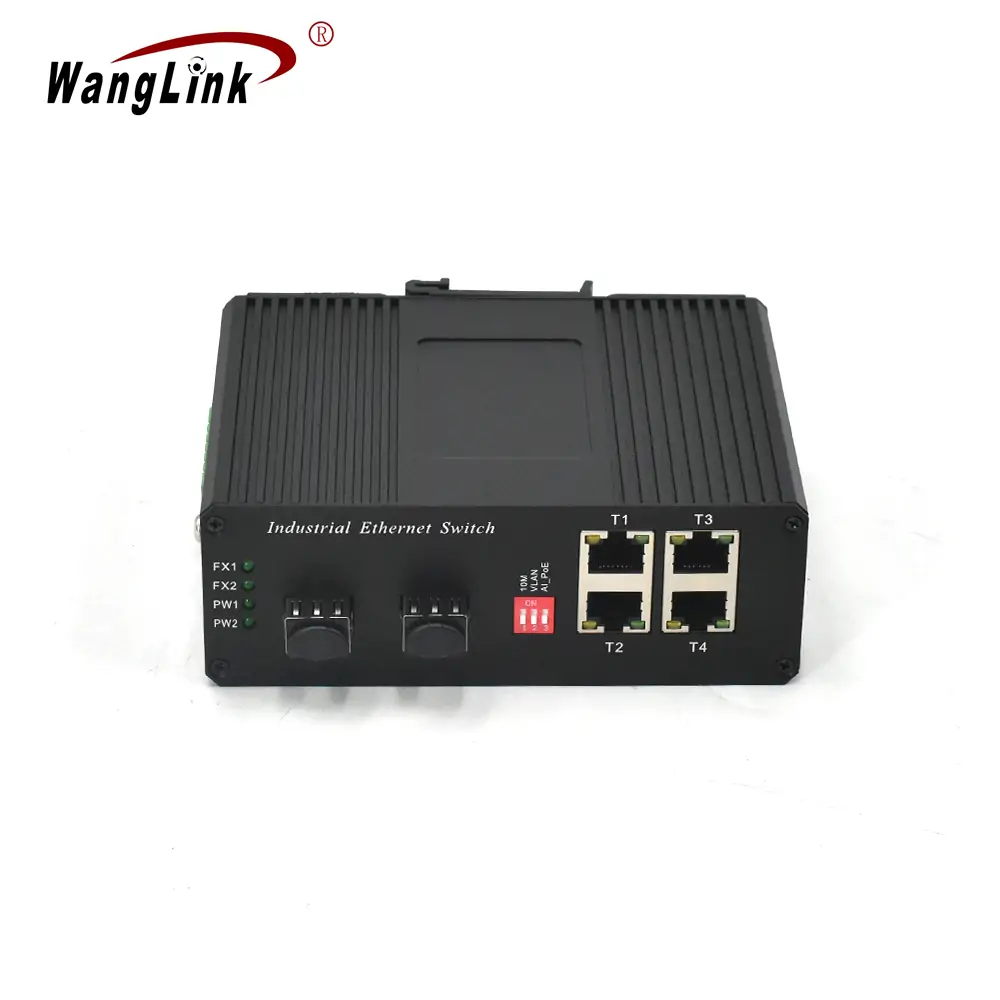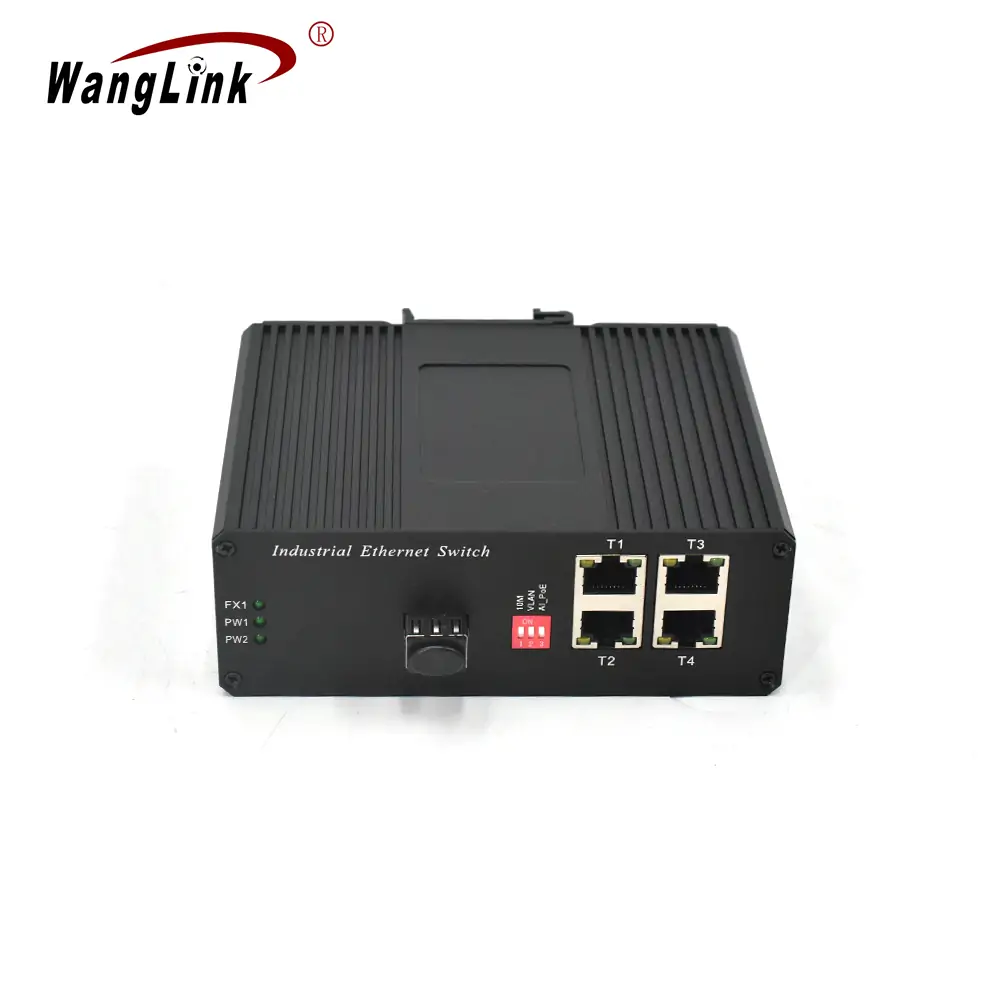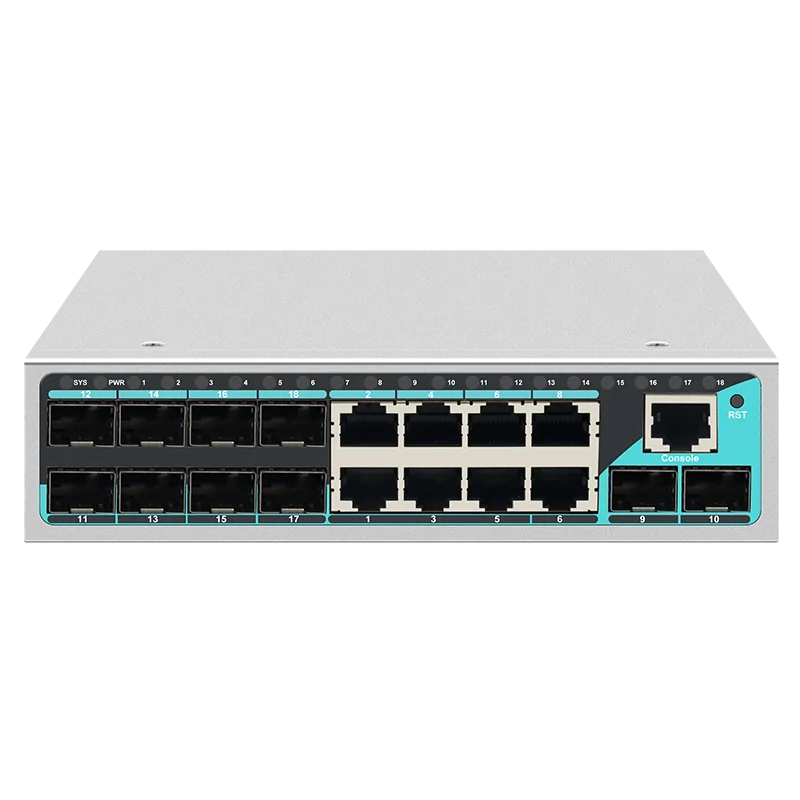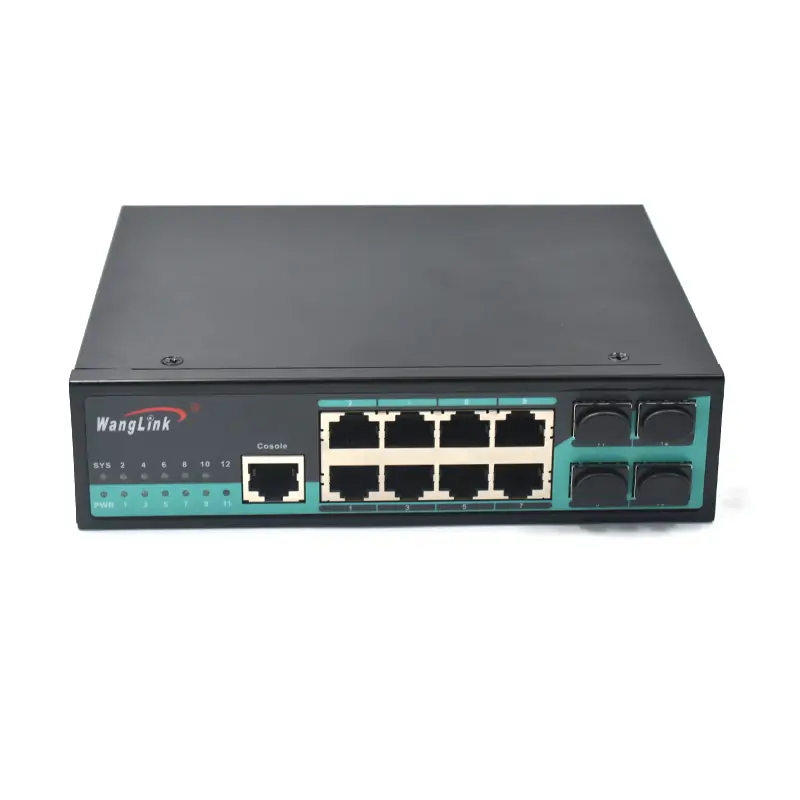In today’s interconnected world, reliable network infrastructure is the foundation of successful business operations. At the heart of this infrastructure lies the switch ethernet technology, which enables seamless communication between devices, servers, and systems across your network. Understanding how to select and implement the right ethernet switching solution can significantly impact your organization’s productivity, security, and scalability.

Understanding Switch Ethernet Technology
What is Switch Ethernet?
Switch ethernet refers to networking devices that connect multiple devices within a local area network (LAN) using ethernet protocols. Unlike traditional hubs that simply repeat signals, modern ethernet switches intelligently forward data packets only to their intended destinations, creating dedicated communication channels between connected devices.
The evolution of switch ethernet technology has transformed from simple 10 Mbps connections to today’s high-speed gigabit and multi-gigabit solutions. This advancement has enabled businesses to handle increasingly demanding applications, from basic file sharing to complex video conferencing and cloud computing operations.
Key Components of Ethernet Switch Systems
Modern ethernet switches incorporate several critical components that determine their performance and capabilities:
- Switching Fabric: The internal architecture that handles packet forwarding
- MAC Address Table: Memory that stores device addresses for intelligent forwarding
- Buffer Memory: Temporary storage for packets during high-traffic periods
- Port Controllers: Individual interfaces that manage each connection
- Management Processor: Handles configuration and monitoring functions
Types of Switch Ethernet Solutions
Unmanaged Ethernet Switches
Unmanaged switches represent the most straightforward ethernet switching solution, offering plug-and-play functionality without configuration requirements. These devices are ideal for small offices, home networks, and simple connectivity needs.
Advantages of Unmanaged Switches:
- Cost-effective solution
- Zero configuration required
- Reliable basic connectivity
- Low power consumption
- Compact form factors
Popular Unmanaged Switch Models:
Managed Ethernet Switches
Managed switches provide advanced features and configuration options, enabling network administrators to optimize performance, implement security policies, and monitor network traffic. These solutions are essential for enterprise environments and complex network deployments.
Key Features of Managed Switches:
- VLAN Support: Virtual network segmentation
- Quality of Service (QoS): Traffic prioritization
- Port Mirroring: Network monitoring capabilities
- SNMP Management: Remote monitoring and control
- Access Control Lists: Security policy enforcement
Industrial Ethernet Switches
Industrial environments demand robust networking solutions that can withstand harsh conditions while maintaining reliable connectivity. Industrial ethernet switches are specifically designed for manufacturing, automation, and outdoor applications.
Industrial Switch Specifications:
| Feature | Standard Switch | Industrial Switch |
|---|---|---|
| Operating Temperature | 0°C to 40°C | -40°C to 75°C |
| Humidity Resistance | Basic | IP30-IP67 Rating |
| Vibration Tolerance | Limited | IEC 61850 Compliant |
| Power Supply | AC Only | DC/AC Options |
| Mounting Options | Desktop/Rack | DIN Rail/Wall Mount |
Featured Industrial Models:
- ISG401: 4-port gigabit with SFP
- ISG101: Single port with fiber connectivity
- ISG1602M: 16-port managed solution

Power over Ethernet (PoE) Switch Solutions
Understanding PoE Technology
Power over Ethernet technology revolutionizes network deployments by delivering both data and electrical power through a single ethernet cable. This capability eliminates the need for separate power supplies for connected devices, simplifying installation and reducing costs.
PoE Standards and Power Delivery:
| PoE Standard | Power Output | Typical Applications |
|---|---|---|
| IEEE 802.3af (PoE) | 15.4W | IP Phones, Basic Cameras |
| IEEE 802.3at (PoE+) | 30W | Wireless Access Points, PTZ Cameras |
| IEEE 802.3bt (PoE++) | 60-100W | High-Power Devices, LED Lighting |
Industrial PoE Switch Applications
Industrial PoE switches combine the ruggedness of industrial networking with the convenience of power delivery, making them ideal for:
- Security Systems: Powering IP cameras and access control devices
- Wireless Networks: Supporting outdoor access points
- Industrial Automation: Connecting sensors and control devices
- Smart Building Systems: Enabling IoT device deployments
Featured PoE Models:
- ISL802P: 8-port industrial PoE with SFP uplinks
- ISL402P: 4-port DIN rail mount solution
- ISL401P: Compact 4-port PoE switch
Advanced Switch Ethernet Features
Layer 2 and Layer 3 Switching
Modern ethernet switches operate at different layers of the network stack, providing various levels of functionality:
Layer 2 Switching Features:
- MAC address learning and forwarding
- VLAN support and management
- Spanning Tree Protocol (STP)
- Link aggregation capabilities
Layer 3 Switching Capabilities:
- IP routing between VLANs
- Static and dynamic routing protocols
- Access control lists (ACLs)
- Network address translation (NAT)
Managed Switch Configuration
Advanced managed switches like the ISG808M and ISG804M offer comprehensive management features:
- Web-based Management Interface
- Command Line Interface (CLI)
- SNMP v1/v2c/v3 Support
- RMON Statistics
- Port-based Authentication
Case Study: Manufacturing Plant Network Upgrade
Challenge
TechManufacturing Corp, a mid-sized automotive parts manufacturer, faced network reliability issues in their production facility. Their existing hub-based network couldn’t handle the increasing data demands from new automated systems and quality control cameras.
Solution Implementation
The company partnered with Wanglink to deploy a comprehensive switch ethernet solution:
Phase 1: Core Infrastructure
- Deployed managed gigabit switches for main distribution
- Implemented VLAN segmentation for different departments
- Established redundant uplinks for high availability
Phase 2: Industrial Floor Connectivity
- Installed industrial PoE switches for harsh environments
- Connected IP cameras and sensors throughout the facility
- Implemented DIN rail mounting for space efficiency
Phase 3: Monitoring and Management
- Configured SNMP monitoring for proactive maintenance
- Established QoS policies for critical applications
- Implemented security policies and access controls
Results Achieved
The network upgrade delivered significant improvements:
- 99.9% Network Uptime: Eliminated production downtime due to network failures
- 50% Reduction in Cabling Costs: PoE technology reduced installation complexity
- Enhanced Security: VLAN segmentation improved network security
- Scalability: Modular design supports future expansion

Selecting the Right Switch Ethernet Solution
Network Assessment Checklist
Before selecting ethernet switches, conduct a thorough network assessment:
Current Infrastructure Analysis:
- Existing device count and types
- Current bandwidth utilization
- Network topology and physical layout
- Power requirements and availability
- Environmental conditions
Future Growth Planning:
- Anticipated device additions
- Bandwidth growth projections
- New application requirements
- Budget considerations
- Timeline for implementation
Switch Selection Criteria
| Criteria | Unmanaged | Managed | Industrial |
|---|---|---|---|
| Cost | Low | Medium-High | Medium-High |
| Configuration | None | Extensive | Moderate |
| Environment | Office | Office/Data Center | Harsh Conditions |
| Features | Basic | Advanced | Ruggedized |
| Scalability | Limited | High | Moderate |
Wanglink’s Customization Advantage
As a leading ethernet switch manufacturer with over 13 years of experience, Wanglink offers comprehensive customization services to meet specific requirements:
Custom Design Services:
- PCBA design and development
- Custom enclosure and branding
- Specialized port configurations
- Environmental hardening options
- Regulatory compliance support
Manufacturing Capabilities:
- ISO 9001 certified production facility
- Advanced testing and quality control
- Flexible order quantities
- Rapid prototyping services
- Global shipping and support
Frequently Asked Questions (FAQ)
Q1: What’s the difference between a hub and an ethernet switch?
A: Unlike hubs that broadcast data to all connected devices, ethernet switches create dedicated communication channels between devices. This eliminates collisions, improves security, and provides full bandwidth to each port. Modern networks exclusively use switches due to their superior performance and security features.
Q2: How do I determine the right number of ports for my switch?
A: Calculate your current device count and add 20-30% for future growth. Consider the physical layout of your network and whether you need multiple smaller switches or fewer larger ones. For example, a 24-port switch might be more cost-effective than three 8-port switches in a centralized location.
Q3: When should I choose managed over unmanaged switches?
A: Choose managed switches when you need:
- VLAN segmentation for security or performance
- Quality of Service (QoS) for prioritizing traffic
- Network monitoring and troubleshooting capabilities
- Advanced security features like port authentication
- Integration with network management systems
Q4: What PoE standard do I need for my devices?
A: Device power requirements determine the PoE standard:
- PoE (802.3af): IP phones, basic cameras (up to 15.4W)
- PoE+ (802.3at): Wireless access points, PTZ cameras (up to 30W)
- PoE++ (802.3bt): High-power devices, LED lighting (up to 100W)
Always check your device specifications and choose a switch that exceeds your power requirements.
Q5: How do industrial switches differ from standard office switches?
A: Industrial switches are designed for harsh environments with:
- Extended temperature ranges (-40°C to 75°C)
- Higher humidity and vibration tolerance
- IP-rated enclosures for dust and water protection
- DIN rail mounting options
- Redundant power supply options
- Enhanced electromagnetic interference (EMI) protection
Q6: Can I mix different switch brands in my network?
A: Yes, ethernet switches follow industry standards and are generally interoperable. However, using switches from the same manufacturer like Wanglink ensures consistent management interfaces, feature compatibility, and unified support. This approach simplifies network administration and troubleshooting.
Q7: What’s the typical lifespan of an ethernet switch?
A: Quality ethernet switches typically last 5-10 years with proper maintenance. Industrial switches often have longer lifespans due to their robust construction. Factors affecting lifespan include:
- Environmental conditions
- Power quality
- Usage patterns
- Maintenance practices
- Technology evolution
Q8: How do I plan for network redundancy?
A: Implement redundancy through:
- Dual uplinks: Connect switches to multiple core switches
- Spanning Tree Protocol: Prevents loops while providing backup paths
- Link aggregation: Combines multiple connections for increased bandwidth and redundancy
- Redundant power supplies: Ensures operation during power failures
- Geographic distribution: Spread critical switches across different locations
Conclusion
Selecting the right switch ethernet solution is crucial for building a reliable, scalable network infrastructure. Whether you need basic connectivity with unmanaged switches, advanced features with managed solutions, or ruggedized performance with industrial switches, understanding your specific requirements is the first step toward success.
Wanglink’s comprehensive portfolio of ethernet switches, combined with our 13 years of manufacturing expertise and customization capabilities, ensures you’ll find the perfect solution for your networking needs. From our products page featuring various switch options to our dedicated customization services, we’re committed to delivering high-quality, cost-effective networking solutions.
For expert guidance on selecting the right switch ethernet solution for your specific application, contact our team at [email protected] or WhatsApp +8613544167258. Our experienced engineers are ready to help you design and implement a network infrastructure that meets your current needs while supporting future growth.
Visit our knowledge base for additional resources and stay updated on the latest networking technologies and best practices. With Wanglink as your trusted partner, you can build a network infrastructure that drives your business success.

